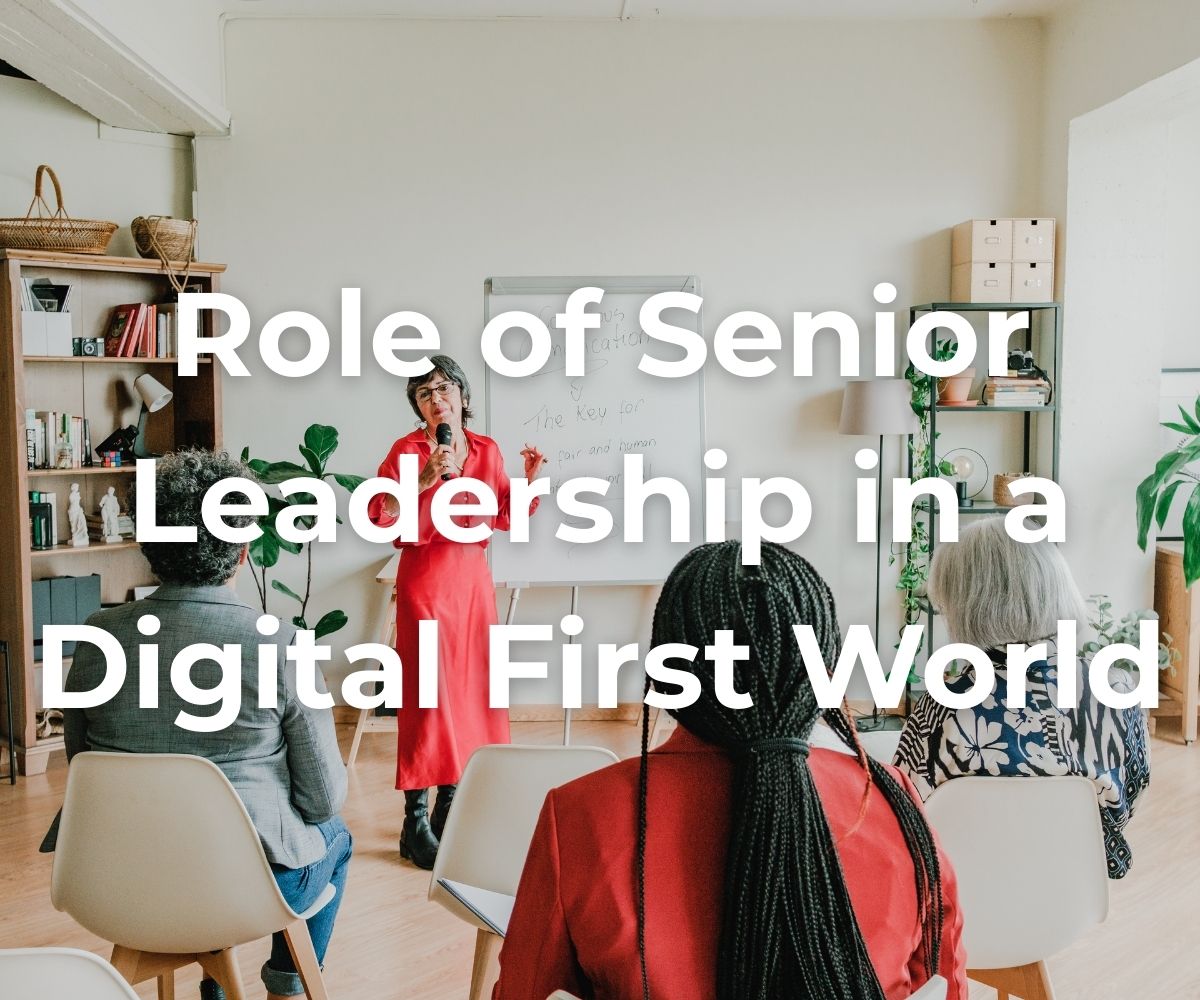role of senior leadership in a digital first world
Description
Senior Leadership and the Digital Era: Navigating What’s Next
The digital age is changing the way business is done, the way business competes, and the way businesses are sustained. Artificial intelligence and automation, analytics, and customer experience are just a few of the areas creating pressures and opportunities once never experienced by leaders.
The top managerial position has become the area that prompts a combination of long-established wisdom in management and digital-era flexibility. It is time to prepare their leaders to lead today, and in a technology-powered world, organizations need to give their leaders the skills, tools, and a sense of vision that ensures they can help drive in the new world.
Introduction: The Role of Senior Leadership in a Digital-First World
The senior leadership roles are no longer restricted to strategy, governance, or performance control. It is also the responsibility of leaders today to serve as digital visionaries inspiring their organization to become a transformational one, making adequate balances between risk and opportunity.
Conventional leadership styles, as useful as they may be, are not adequate in an environment that is highly agile, driven by data-based wisdom, and highly innovative.
With such a change, a number of leaders are pursuing the superior courses, including the IIM Senior Management Program, which combines strategic leadership and knowledge on digital transformation. Such programs will enable leaders to learn how to use emerging technology, change management, and how to transform their organization to be able to sustain its growth.
Why Digital Transformation Demands New Leadership Approaches
The digital economy has become a threat to industries in every part of the world. Companies have to re-strategize themselves to stay competitive. To senior leaders, the implications are:
Innovation Driving: New technology-powered growth opportunities.
- Managing Change: How to combat organizational resistance to new tools, systems and mindsets.
- Become Resilient: Establishing business preparedness to disruptive events as well as dealing with accelerating change.
- The growing of Agility: Promoting experimentation, rapid failure, and quick learning in teams
- A successful leader in the digital age is the one who can relate technological changes to long-term thinking and delivery.
The Factors that are Required in Senior Leadership in the Digital Age
Awareness of Digital Literacy
- Leaders will not program or engineer, and they will not have to know how these components of technology work and their strengths and weaknesses, such as artificial intelligence, cloud computing, blockchain, and data analytics, but will need to be aware of what these technologies can and can not do.
- Digital literacy will enable the leaders to make informed decisions, which are fact-based, ask the right questions, and set feasible expectations.
Strateg,y Agility, and Strategic Vision
- The top management is expected to be visionary, and this should lead them on the digital transformation and also how the organizational objectives are being tackled. However, agility is also a very important factor -the plans must be adaptable to the evolution in technology and markets.
Data-Driven Decision-Making
- In the age of digital, information is an asset. Evidence-based insights, as opposed to intuition alone, produced better decisions made by leaders. This encompasses the deployment of predictive analytics, market intelligence, and customer data to design stratagems.
Humane Leadership and Compassion
- Where technology has its role in leading to change, it is the human being who is central to all change. Senior leaders should focus on empathy, leaving the employees informed and engaged in change. The success of any digital initiative could be attained by a robust culture.
Managing the risks in the digital environment
- Leaders must be well-informed concerning cybersecurity, compliance, and ethical use of data. The top management should be ready to strike a balance between innovation and responsibility so that risks are considered minimal.
Challenges Leaders Face in the Digital Era
- Cultural Resistance: Employees and even middle management can feel the impact of new digital tools and approaches. This needs to be overcome through communication and training.
- Skill Gaps: New skills are required by digital transformation. Leaders have to provide reskilling and upskilling for their team.
- Technology Overload: At this age of many emerging technologies, there are challenges in the identification of what is relevant to the organization.
- Short Term vs Long Term Goals: Leaders have the tricky balancing act of maintaining the day-to-day operational efficiency while investing in long-term change.
How Senior Leaders Can Prepare for What’s Next
Invest in continuous learning.
- Leadership learning should also not be a vacuum, as the technological world is dynamic. Top management must take part in higher levels of management and executive development training on online change, innovation, and strategic management.
Promote cross-functional teamwork
- A digital transformation is not exclusive to the IT department. The leaders' command to demolish silos and promote a cross-departmental collaboration that will allow the flow of innovation in the organization.
Take a Customer First Approach
- It is important to understand the developing customer demands. Leaders have to make digital programs more aligned to better customer experience and loyalty.
Create Future-Ready Workforces
- It is necessary to train the future leaders. Mentorship, leadership development programmes, and digital skill training will be pivotal as investments to help the firm grow in the long run.
Keep up with the new trends.
- Regardless of the topic of generative AI, climate-led approaches or the latest hybrid workplace, the crucial thing is that leaders need to be inquisitive and visionary to expect rather than respond to being disrupted.
The Future of Senior Leadership in the Digital Era
Adaptability, inspiration, and innovation: it is these three concepts that will characterize the world of leadership in the future. Senior leaders will be presented with the dilemma of dealing with the speed of change and creating a sense of confidence in people. But this is because they can and will survive in the digital economy.
Digital age leadership is integrative in nature; it means uniting technology, people, strategy, and culture to produce long-term success. No more being on top and dictating to the rest, it is time to empower teams, change, and be innovative through others.
Conclusion
The digital age creates both the possibility and challenge of senior leadership. Leaders who can innovate, make evidence-based decisions, and embrace a culture of trust will be best positioned to handle what's next. The formal education campaigns, such as the IIM Calcutta Senior Management Program, will provide an appropriate platform to leaders to bridge the gap between the traditional leadership and the needs of the digital age.
Meanwhile, the increasing role data and analytics play can not be disregarded by modern leaders. Leaders and managers who utilize course programs such as the IIM Business Analytics Course empower themselves with the ability to ensure data remains advantageous in the competitive marketplace.
With the workplace evolving, the classical generation of leaders with a mix of strategy, technology, and empathy will be at the tipping point of organizational success in the digital era.





















